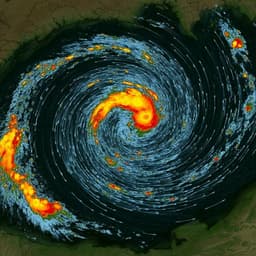
Earth Sciences
East Gobi megalake systems reveal East Asian Monsoon dynamics over the last interglacial-glacial cycle
H. Li, X. Yang, et al.
Discover the intriguing paleohydrology of the East Gobi Desert, revealing expansive paleolakes and climatic shifts since the last interglacial. This research, conducted by Hongwei Li, Xiaoping Yang, Louis Anthony Scuderi, and colleagues, highlights the wet phases and their impact on East Asia's climate dynamics.
~3 min • Beginner • English
Related Publications
Explore these studies to deepen your understanding of the subject.







